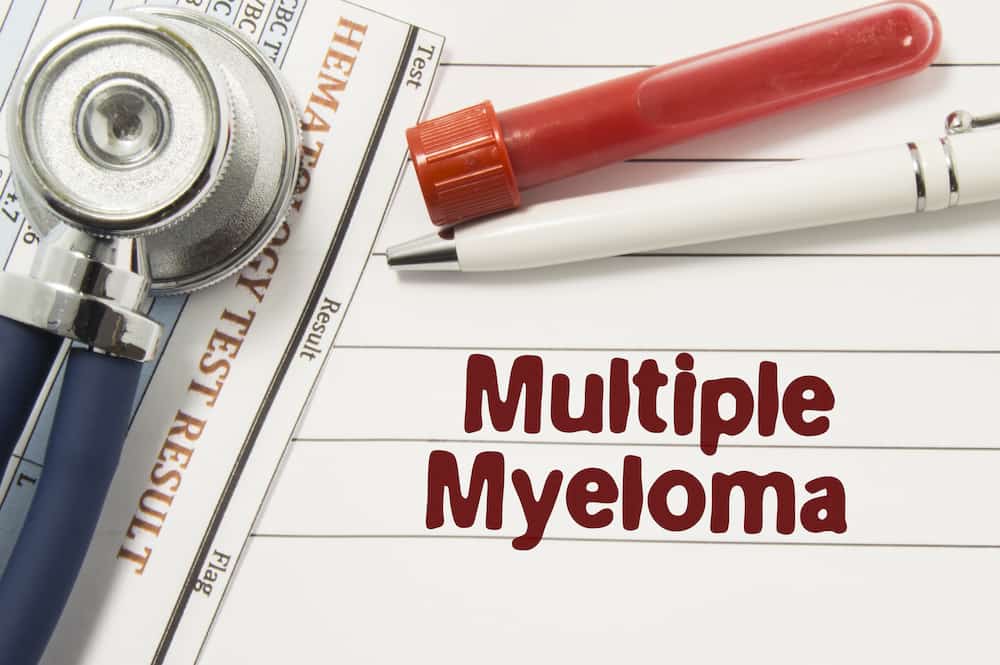Causes

In multiple myeloma, patients usually start with a condition known as monoclonal gammopathy of undetermined significance. This is a plasma cell condition that precedes cancer, a premalignant condition in which affected plasma cells go through one mutation after the other, increasing their capacity to proliferate rapidly and without any control. In this premalignant condition, plasma cells are still taking 10% of the bone marrow or less.
This is followed by smoldering multiple myeloma, in which the number of plasma cells in the bone marrow goes beyond 10%. In the end, plasma cells in multiple myeloma lose their self-restraints and become aberrant. They have extra copies of chromosomes and many overlapping mutations with impressive genetic heterogeneity. Such variations in proteins and genetic makeup contribute to drug resistance in these patients.
There is no exact trigger for all of these changes, but a variety of factors play a significant role:
- Genetic risk factors: The disease apparently has an important genetic predisposition because it is more common in identical twins and those who have first-degree relatives with multiple myeloma. This is apparently due to abnormalities in specific oncogenes such as c-myc and PT53.
- Environmental risk factors: People who are frequently exposed to herbicides, insecticides, benzene, organic solvents, and other petrochemical industry products are at a higher risk of developing multiple myeloma.
- Patients with MGUS: When patients are diagnosed with monoclonal gammopathy of undetermined significance (MGUS), they are at a higher risk of multiple myeloma than the rest of the population. These patients have a mounting risk of progression to multiple myeloma of 1% every year.
- Radiations: Multiple myeloma has been found at a higher incidence in survivors of the atomic bomb. Similarly, there was a correlation between a higher risk of multiple myeloma in patients exposed to uranium radiation.
- Inflammatory diseases: Patients with inflammatory diseases have a slightly increased risk of multiple myeloma. This correlation is still elusive, and some studies show no association.
- Infections with herpesvirus 8: When human herpesvirus 8 infections affect the dendritic cells in the bone marrow, patients will have a higher risk of monoclonal gammopathy of undetermined significance, which then turns into multiple myeloma.
